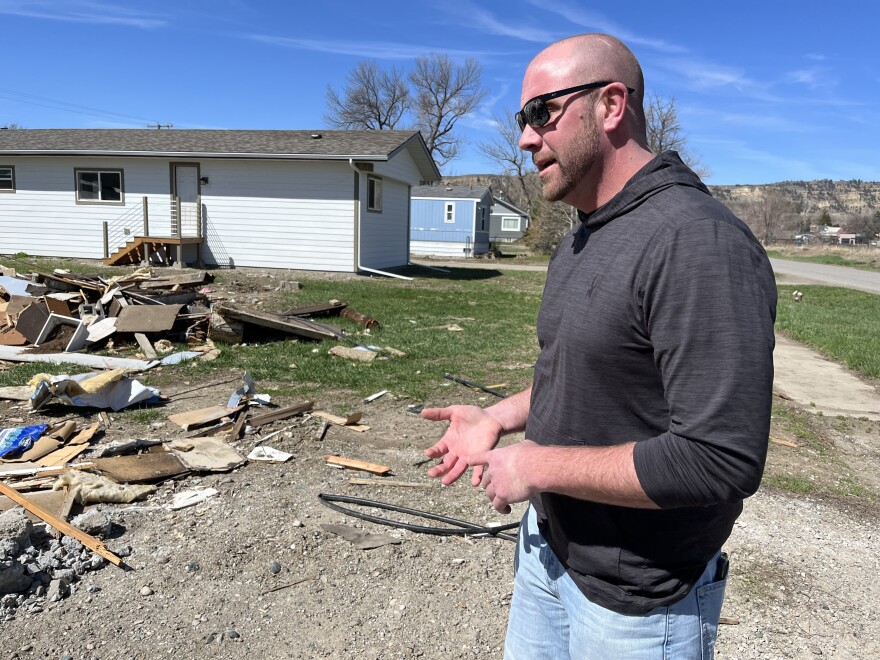One year after historic floods washed out roads in and around Yellowstone National Park, the park is mostly recovered and open for business as usual.
Still struggling, though, are people displaced because the floods took out some of the only affordable housing near park gateway towns.
Amanda Holmes, a 31-year-old mother of four, works at a gas station along the Clark’s Fork of the Yellowstone River.
A year ago, when the big floods hit, she was standing in the kitchen of her mobile home in the small town of Fromberg. It’s close to a popular scenic highway into Yellowstone National Park.
Her son told her he saw water in the road, and sure enough, there was water in the road. A lot of it.
A couple of days later, she and her family had to evacuate permanently. Water got deep enough inside her trailer to cover the furniture in the bedrooms.
They soon learned their mobile home would have to be condemned – they’d lost their place to live and would need to move into their camper.
“Very surreal at the moment, just knowing that all of our stuff is practically gone,” said Holmes.
Now, a year later, Holmes, her husband and her kids, aged four to ten, are still living in a camper. Holmes said she got less than $5,000 in assistance money from FEMA and the Red Cross, and her family still can’t find a place to rent.
“If it’s big enough, they either want way too much rent that I can’t afford, or they don’t want pets,” she said.
There was already an affordable housing crisis in Yellowstone gateway communities before the floods hit, said Kristin Smith with the Montana think tank Headwaters Economics
“What happened with the Yellowstone floods is that it came in and made a tough situation even worse,” said Smith.
Accordsing to the National Low Income Housing Coalition, Montana is short nearly 16,000 rental units for its lowest income people.
“So again, if you have a flood event that actually takes houses offline, you’re just creating less housing in a place that already desperately needed more housing options,” Smith said.
Smith said nearly 10 percent of Montana’s housing stock are mobile homes, a higher rate than most states.
Amanda Holmes can’t go back to the trailer park where she lived before. The land has been sold to a new developer, Fromberg councilman and businessman Nate Caton.
Caton said the former mobile home park of more than a dozen structures was aging and said only a handful were occupied before the flood. He and his co-owner aren’t interested in running it as a trailer park again.
He’s refurbishing houses on the property, and Caton said they want to build 4 new permanent units, but ones that are still accessible for working class families.
“It was a chance to hit the reset button, and why not give something to the community that it needed the most outta anything?”
For now, there’s less housing than there used to be in Fromberg, making it a lot harder for working mom Amanda Holmes to stay, which she wants to do, because her four kids are enrolled in a school she really likes.
“They are great. I would not put them in any other school,” she said. “They work so good with my kids and my kids have excelled so far.”
She hopes to find a place. If not in Fromberg, in nearby Bridger where she works.
Until then, she’s living on a friend’s property and browsing social media, looking for a permanent home.



